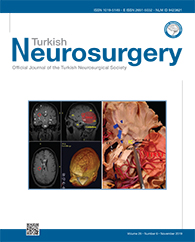MATERIAL and METHODS: A total of 80 patients (84 hands) operated by a single surgeon with a mini incision were included. The patients were evaluated postoperatively for the presence of pillar pain, pain on the incision scar, and scar sensitivity in addition to preoperative findings. The Quick Disabilities of the Arm, Shoulder and Hand (Quick DASH) questionnaire was used for clinical scoring. To evaluate the effectiveness of the method, the findings were recorded at and compared between at 12 and 24 months follow-ups.
RESULTS: No complications were observed at the wound site in the early postoperative period. Ten patients reported numbness, 5 experienced weakness, and 4 revealed positive Tinelâs sign. Keloid formation without pain and scar sensitivity was detected in 2 patients at 6 months. No patient reported night pain, pain on pillar or incision scar, scar sensitivity, recent sensory loss, and disease recurrence. Numbness was present in 7 patients at 12 months and in 3 at 24 months; 3 and 2 patients reported weakness at 12 and 24 months, respectively. The mean Quick DASH score was 72.7 preoperatively, 10.2 at 12 months, and 9.1 at 24 months.
CONCLUSION: The median nerve decompression in the carpal tunnel may be performed with a mini incision made proximal to the distal wrist crease is effective and safe method, and provides less complications and higher patient comfort.
Keywords : Carpal tunnel syndrome, Median nerve decompression, Mini incision




